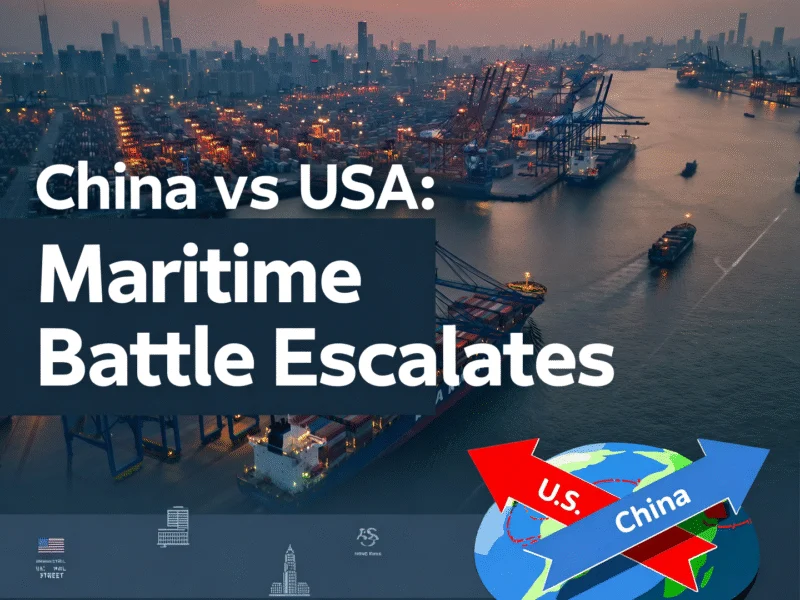Trade Tensions Extend to Capital Markets
China has reportedly opened a new front in its ongoing maritime dispute with the United States by targeting the capital market, according to analysis from Breakingviews. Sources indicate that Beijing has implemented reciprocal port fees specifically designed to impact entities with American ownership connections, potentially affecting major firms with New York-traded stock. The report states this strategic move demonstrates China’s determination to defend its shipping dominance even at the risk of disrupting global trade patterns.
Escalating Maritime Measures
The maritime tensions between the world’s two largest economies reportedly began in March when the Trump administration unveiled plans for special docking fees targeting Chinese-built or Chinese-flagged vessels at American ports. According to the analysis, the initial U.S. measures aimed to bolster American shipbuilders, who hold approximately 0.1% global market share compared to 53% for Chinese rivals. However, following industry resistance, Washington reportedly diluted the measures by easing fees from initial proposals and exempting many U.S.-based operators.
China’s retaliation, according to reports, involves nearly identical port levies but with a crucial distinction: the new rules apply to vessels owned or operated by entities that are 25% or more owned by American businesses or individuals. Analysts suggest this represents a clever strategic move since U.S.-made ships account for just 4% of the global fleet, while companies owning or chartering ships that might be impacted include international giants like Australia’s BHP and Brazil’s Vale, both of which have American depositary receipts trading in New York.
Potential Global Shipping Impact
The shipping battle between China and the U.S. could have significant consequences for global trade, according to industry analysis. HSBC analysts reportedly reckon that China’s targeted approach will likely lead to a spike in freight rates, potentially creating far more disruption than the impact of the original U.S. fees. Shipping data firm Alphaliner estimates that the U.S. measures could cost up to $3.2 billion in 2026 for the top 10 carriers, with China COSCO Shipping bearing the brunt.
Industry responses have already begun materializing, with reports indicating that Maersk and other major carriers have switched China-linked ships out of their U.S. shipping lanes in anticipation of the new fee structures. This strategic repositioning suggests companies are preparing for prolonged trade disruptions as the two economic powers continue their maritime standoff.
Broader Economic Implications
The conflict appears to be extending beyond direct shipping measures into broader economic territory. According to the report, Beijing officials simultaneously sanctioned five U.S.-linked subsidiaries of South Korea’s Hanwha Ocean, which China accused of assisting and supporting a U.S. probe into Chinese trade practices. Notably, Hanwha recently pledged to invest $5 billion to expand its American shipyard in Philadelphia, a development that analysts suggest puts other foreign shipmakers and global funds helping Trump’s efforts to reshore shipbuilding “on notice.”
China’s substantial position in global shipping and trade means it can reportedly not only withstand Washington’s economic salvos but also retaliate effectively. Against the backdrop of the escalating trade war between the world’s two largest economies, analysts from Breakingviews suggest that stakeholders should expect continued turbulence in global shipping markets and capital markets connected to maritime trade.
For additional financial commentary and analysis, follow @Breakingviews on Twitter or sign up for a free trial of their full service. This coverage is based on reporting from Reuters Breakingviews, and additional Reuters content licensing information is available through their official portal.
This article aggregates information from publicly available sources. All trademarks and copyrights belong to their respective owners.



